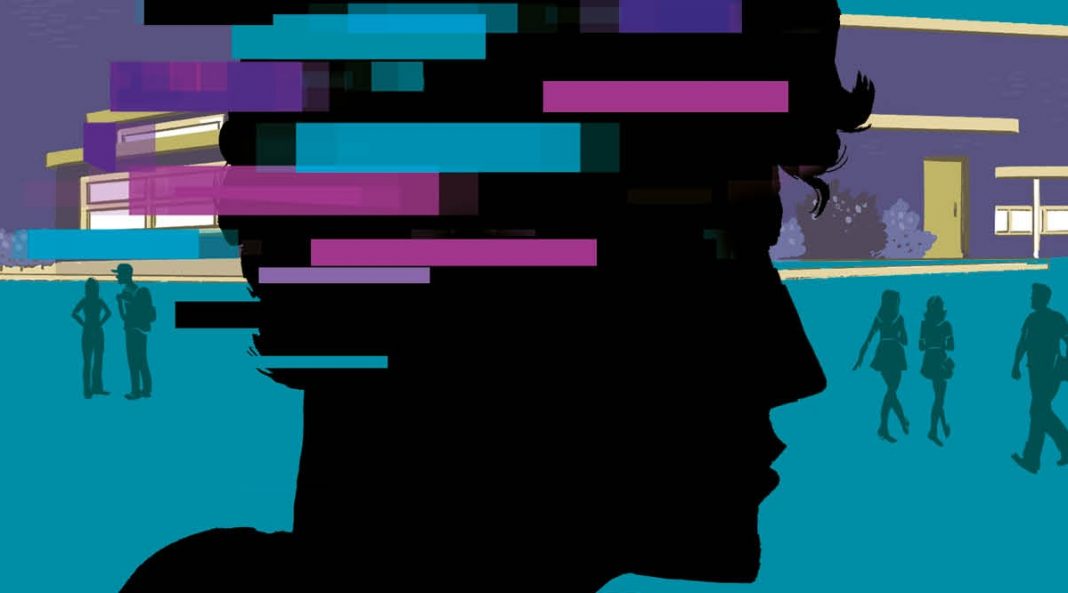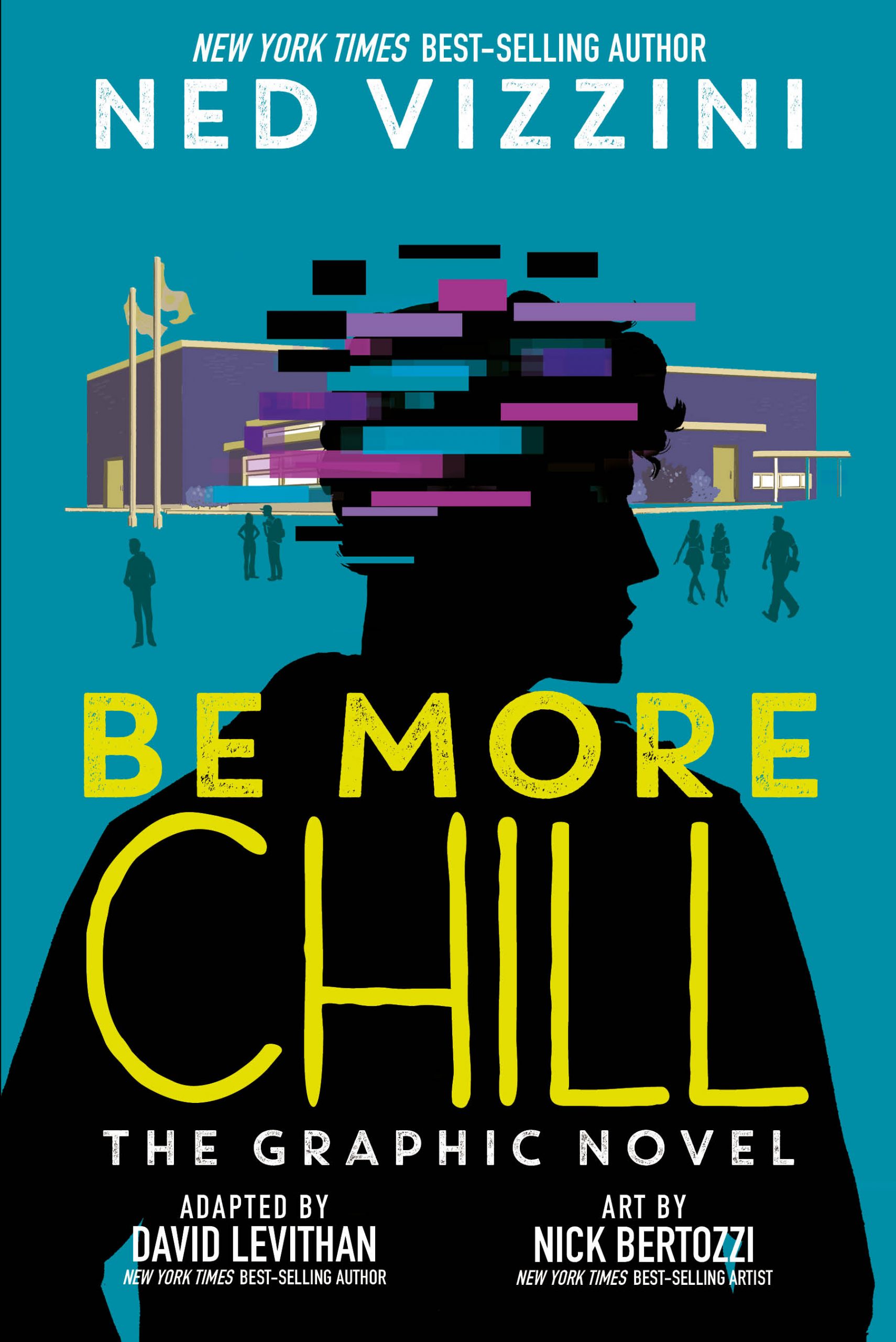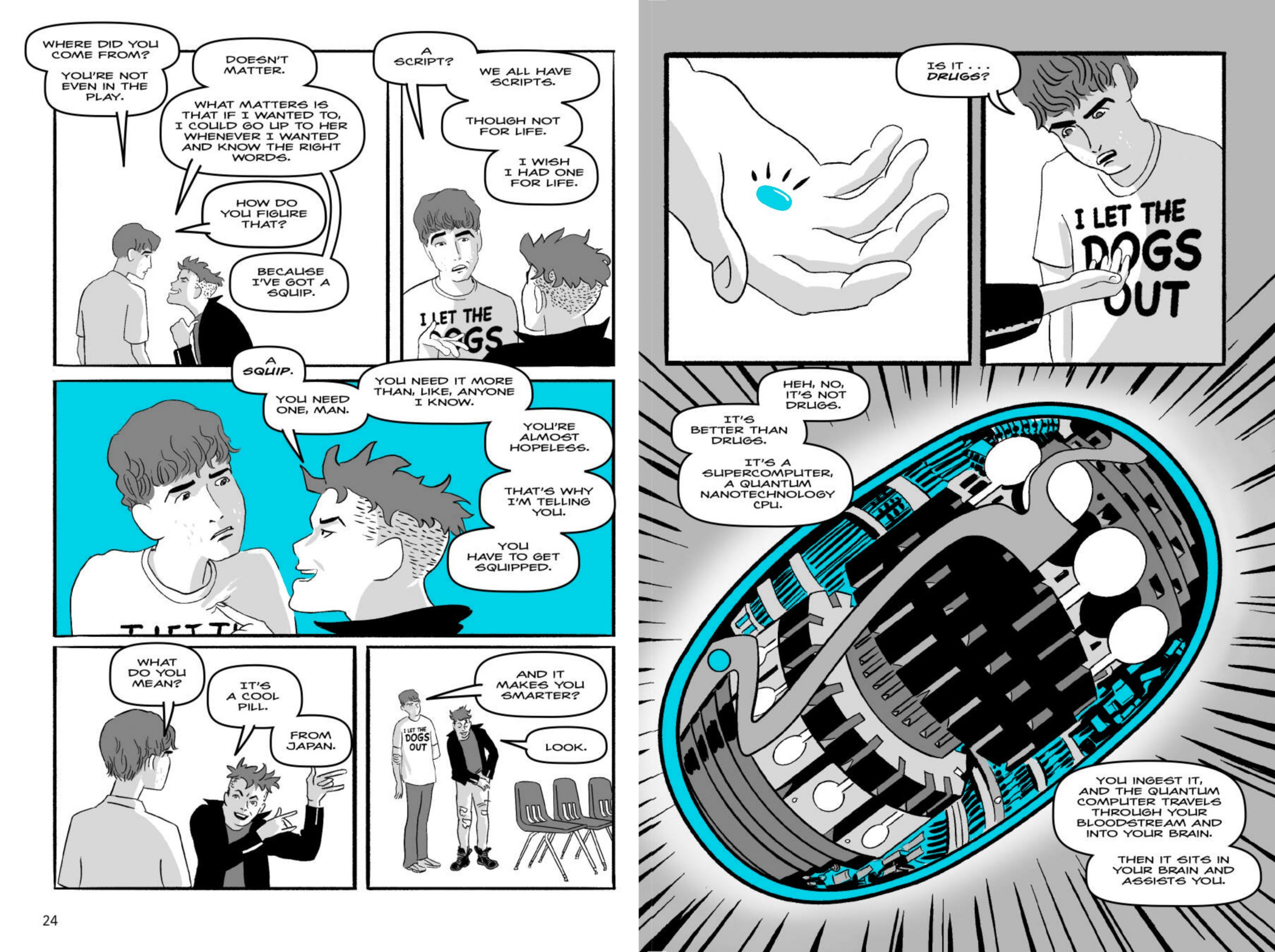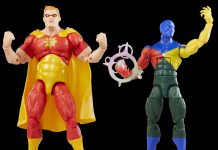In Be More Chill, Jeremy Heere can’t seem to get it together, and that means he’s never going to get a chance with Christine, the girl of his dreams. But one day, he gets the chance to swallow a pill-sized supercomputer called a “squip” that will turn his life around… but can this really be the kind of deal that comes without consequences?
Be More Chill is based on a young adult novel by Ned Vizzini. And you may have already heard of it, even if you prefer the stage to the page: it has prevously been adapted into a Tony-nominated Broadway musical.
On January 5th, 2021, a young adult graphic novel adaptation by David Levithan and illustrated by Nick Bertozzi will be released. The Beat got a chance to ask Levithan about the differences between adapting the novel to comics rather than the stage, what it’s like to write historical fiction about 2004, and how the graphic novel conveyed the squip’s internal dialogue!
AVERY KAPLAN: You’ve written and co-written several novels but this is your first graphic novel adaptation! Was there any part of the process of writing a graphic novel adaptation that surprised you?
DAVID LEVITHAN: There were many, but on the most basic level, it was the most visual I’ve ever had to be as a writer. Many writers (including many of my co-writers) see pictures as they’re writing – it’s like there’s a movie in their mind and they’re transcribing the action into words. For whatever reason, I don’t really see anything – I have a sense of the action, but am focused almost entirely on the words and their sounds. So it was interesting to push myself to not only focus on Ned’s words but to position the story so an illustrator could come along and use my blueprint to build the graphic novel. I’m curious to see if this alters the way I approach a non-graphic novel the next time I write one.
KAPLAN: Does the fact that Be More Chill has previously been adapted as a musical have an effect on your graphic adaptation of the novel?
LEVITHAN: Funny story, that. While I was working on Be More Chill, the book writer for the Be More Chill, Joe Tracz, was . . . adapting my and Rachel Cohn’s novel into the Netflix series Dash & Lily. And since I’d written an afterward for the paperback version of Be More Chill and had a really close mutual friend with Joe, I was aware of Be More Chill from its start. I had seen it a few times (and listened to it plenty more) before I started adapting. But the whole time, it was very clear – I was adapting the novel, NOT the musical. So I would joke with Joe that he’d found some very elegant solutions for some of the novel’s bumpier parts – but I couldn’t use his solutions and had to invent my own. Luckily, I’d read the novel a few times before ever seeing the musical, so my sense of it wasn’t defined by the musical. (That said, to honor the musical, I DID find a place in the book to put Michael in the bathroom….)
KAPLAN: You mention in the afterword that some of the decisions you made in the graphic adaptation were different than the decisions made for the musical adaptation. Can you give an example? What goes into adapting a novel to specific, distinct mediums?
LEVITHAN: As I’ve seen with adaptations of my own work, the best adaptations keep the spirit of the novel while taking liberties with plot points and characters in order to satisfy the medium in which its being adapted. The clearest example of this is the musical has a completely different ending than the novel. But somehow, because the characters remain consistent, it feels like it was the ending all along. With the graphic novel, I had to stick with the original ending, but find a way to make it work for a graphic novel. Am I aware that some people who have only seen the musical will get to the ending and think “Huh?” Sure. But that’s the same with people who love the book who went to see the musical – there’s definitely a “huh?” but ultimately there’s an “okay, cool” that comes right after.
I’ll also admit I was very, very jealous of the fact that the musical got to deploy an actor to play the squip. Because there was definitely a moment when I had the realization that I’d agreed to adapt a novel where a lot of the time, the character is talking to a voice in his head – NOT the most visually arresting scenario. But Nick, the illustrator, was up for the challenge, and we made it work even if we didn’t have Jason Tam doing his masterful Keanu Reeves impression on our pages.
KAPLAN: One of the uniquely “graphic” methods of storytelling utilized by the Be More Chill graphic novel is the way the squip’s “dialogue” is presented with blue boxes, so the reader instantly knows when the squip is “speaking.” How did this interesting narrative technique come about?
LEVITHAN: As mentioned above, I felt somewhat desperate to give the squip its own voice even if there wasn’t an actor there to give it voice. In my script, I wrote the squip’s dialogue in a different color, and Nick translated that visually into the art.
KAPLAN: Comics and prose are two very different mediums. Is there any element of the Be More Chill novel that was difficult (or impossible) to adapt? Was there any element of the story that was particularly easy?
LEVITHAN: I knew that something had to go in my adaptation because we didn’t want it to be twice the page count of the book. So I did what is perhaps the most teenager move possible, which is that I pretty much erased all of the adults, especially Jeremy’s parents. This meant getting rid of some really fun scenes (particularly a Beenie Baby heist) . . . but I knew that they weren’t really as essential to the story as the rest.
As for easy parts – Ned is such a master of dialogue. I’d get to those stretches and the only work I had to do was suggest to Nick what angle he should hit with each panel. The words were already there, singing to me.
KAPLAN: The novel Be More Chill was originally published in 2004. While the graphic novel adaptation is being published in 2021, it still seems to be set in the mid-2000s, judging by the pop culture and technology (aside from the squip, of course). What went into the decision to set the adaptation in 2004 instead of updating the timeline to 2021?
LEVITHAN: It felt truest to Ned’s vision to keep the story in 2004, rather than try to translate it to now. I think one of the marvels of the story is how timely it is, even though Ned wrote it before smartphones took over our lives. Ned was writing a cautionary tale (which he knew), but he was also writing an origin story (which he couldn’t have known in 2004). I wanted to be sure both pieces were in the adaptation. And also, I admit, I had a blast writing “historical fiction” set in 2004, and figuring out which references made the most sense. And the fact that Enimem is still with us to be a part of it – well, I just assume he read the novel when it came out and took it as a personal cautionary tale, staying away from hockey rinks.
KAPLAN: I don’t want to spoil anything, but certain kinds of junk food play a significant role in the story! Do you have a certain kind of junk food or drink that is your favorite?
LEVITHAN: This is how you know the story is still very much Ned’s and not bent to my own proclivities. Because if it was, I imagine there would have been a starring role for Diet Dr Pepper.
Be More Chill: The Graphic Novel will be on sale at your local bookstore on January 5th, 2021.










